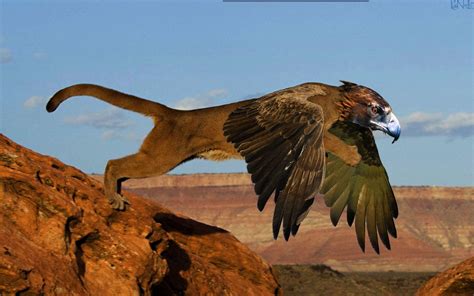The eagle and the lion are two of the most iconic and revered creatures in the animal kingdom, each with its own unique characteristics, strengths, and symbolic meanings. The eagle, with its soaring wings and piercing gaze, is often seen as a symbol of freedom, power, and wisdom, while the lion, with its regal mane and mighty roar, is commonly associated with courage, strength, and leadership. In this article, we will delve into the fascinating world of these two magnificent creatures, exploring their habitats, behaviors, and the complex relationships they have with their environments and each other.
Physical Characteristics and Habitats

Eagles and lions are both apex predators, but they inhabit different ecological niches and have distinct physical adaptations that enable them to thrive in their respective environments. Eagles are found on every continent except Antarctica, with over 60 species ranging from the tiny hawk-eagles to the massive golden eagles. These birds of prey are characterized by their broad wings, sharp talons, and hooked beaks, which are perfectly suited for soaring, hunting, and tearing flesh. In contrast, lions are found primarily in savannas, grasslands, and open woodlands of Africa and India, with their tawny or golden coats, shaggy manes, and powerful physiques making them well-adapted to their roles as social hunters and fierce protectors of their prides.
Diet and Hunting Strategies
Eagles are carnivorous birds that feed on a wide variety of prey, including small mammals, birds, reptiles, and fish. They are skilled hunters, using their exceptional eyesight, agility, and speed to catch their quarry off guard. Some eagle species, such as the bald eagle, are opportunistic feeders, scavenging for carrion and stealing food from other birds, while others, like the golden eagle, are dedicated predators that actively hunt and kill their prey. Lions, on the other hand, are obligate carnivores that feed primarily on large ungulates, such as zebras, antelopes, and wildebeests. They are social hunters that use coordinated attacks to stalk and ambush their prey, with different members of the pride playing specific roles in the hunt.
| Characteristics | Eagles | Lions |
|---|---|---|
| Habitat | Forests, mountains, grasslands | Savannas, grasslands, open woodlands |
| Diet | Small mammals, birds, reptiles, fish | Large ungulates, such as zebras and wildebeests |
| Hunting Strategy | Solo hunters, using stealth and speed | Social hunters, using coordinated attacks |

Key Points
- Eagles and lions are apex predators with distinct physical characteristics and habitats.
- Eagles are skilled hunters that feed on a wide variety of prey, while lions are social hunters that feed primarily on large ungulates.
- Both eagles and lions play critical roles in maintaining the balance and diversity of their ecosystems.
- Preserving these creatures and their habitats is essential for maintaining the health and integrity of their ecosystems.
- By studying eagles and lions, we can gain valuable insights into the complex dynamics of nature and the importance of conservation and sustainability.
Conservation Status and Threats

Both eagles and lions are facing numerous threats to their survival, including habitat loss, human-wildlife conflict, poaching, and climate change. Many eagle species are vulnerable or endangered due to the destruction of their habitats, pollution, and the introduction of invasive species. Lions, on the other hand, are threatened by the loss of their prey base, human-lion conflict, and the illegal wildlife trade. Conservation efforts, such as habitat protection, research, and community engagement, are essential for protecting these magnificent creatures and preserving the integrity of their ecosystems.
Human-Eagle and Human-Lion Conflict
As human populations expand and encroach on natural habitats, conflicts between humans and eagles, as well as humans and lions, are becoming increasingly common. Eagles may be seen as threats to livestock or human safety, leading to persecution and habitat destruction, while lions may be viewed as competitors for resources or threats to human life, resulting in retaliation and habitat fragmentation. Addressing these conflicts requires a nuanced understanding of the complex relationships between humans, eagles, lions, and their environments, as well as the development of effective conservation strategies that balance human needs with the protection of these magnificent creatures.
What are the main threats to eagle populations?
+The main threats to eagle populations include habitat loss, pollution, climate change, and human-wildlife conflict.
How can we reduce human-lion conflict?
+Reducing human-lion conflict requires a combination of conservation efforts, such as habitat protection and research, as well as community engagement and education initiatives that promote coexistence with lions.
What can we learn from studying eagles and lions?
+Studying eagles and lions can provide valuable insights into the complex dynamics of nature, the importance of conservation and sustainability, and the intricate relationships between species and their environments.
As we reflect on the majesty and importance of eagles and lions, it becomes clear that these creatures are not just fascinating animals, but also vital components of their ecosystems. By working to protect and preserve these magnificent creatures and their habitats, we can help maintain the balance and diversity of nature, ensuring a healthy and thriving planet for generations to come.



